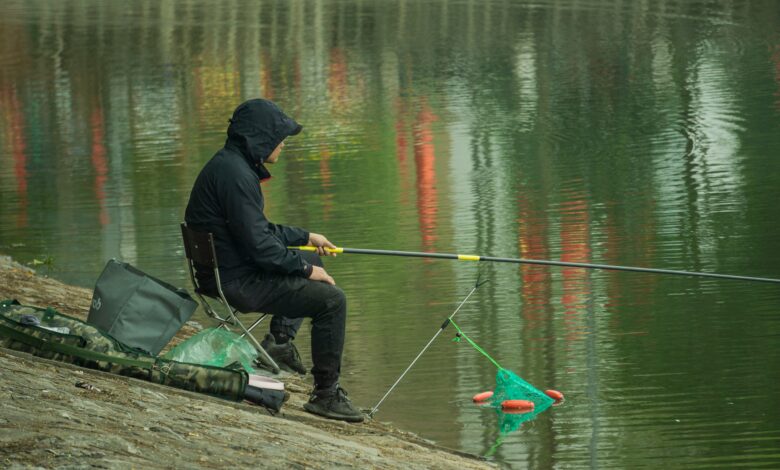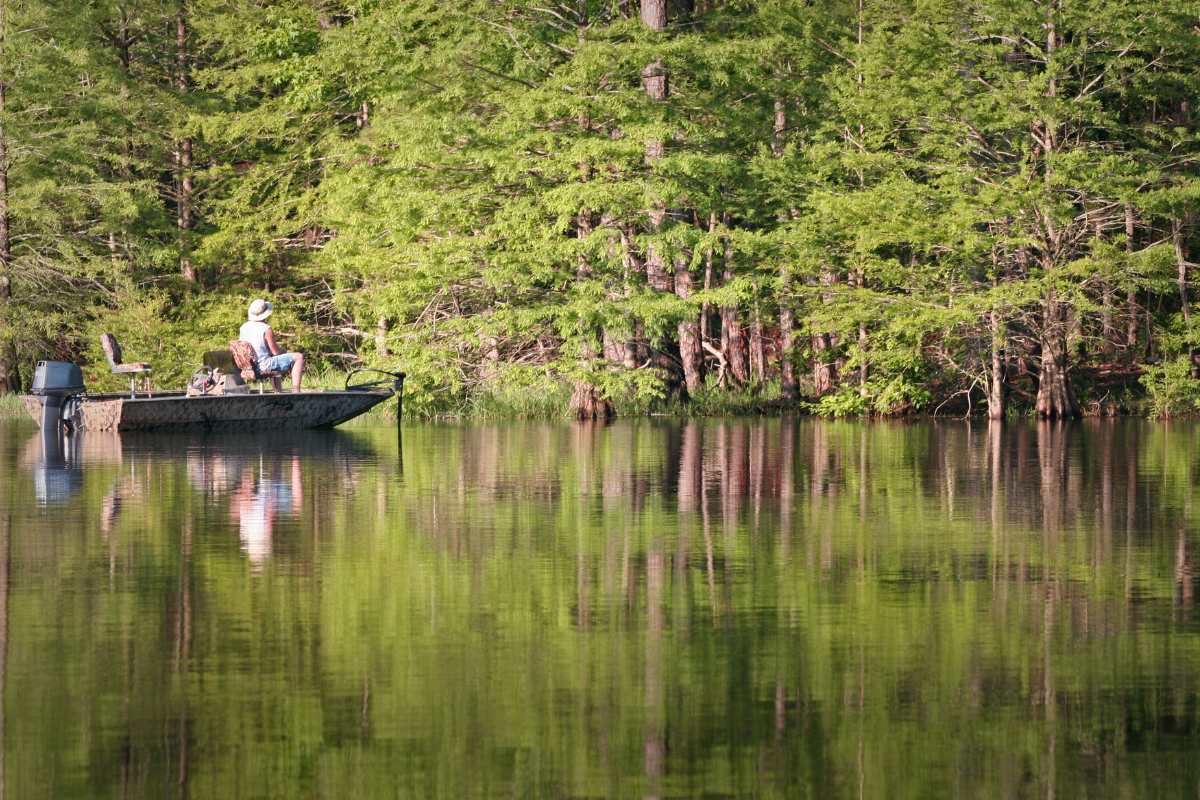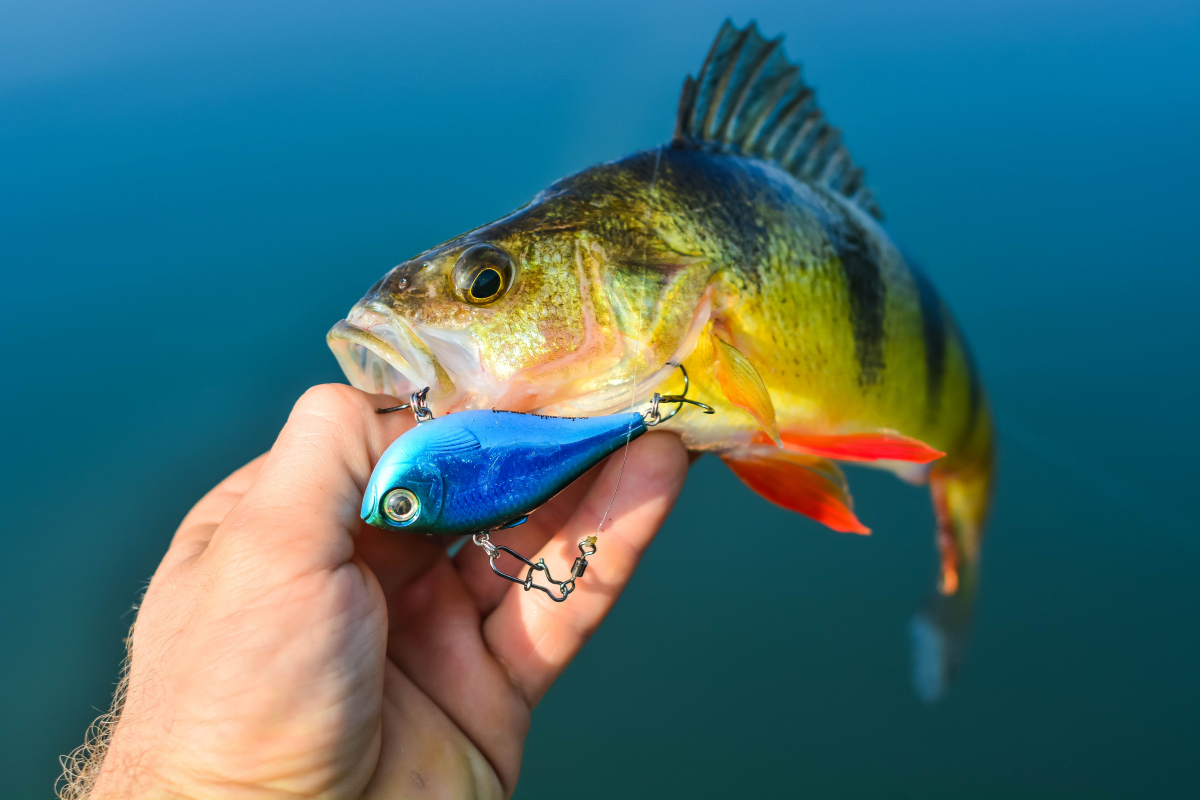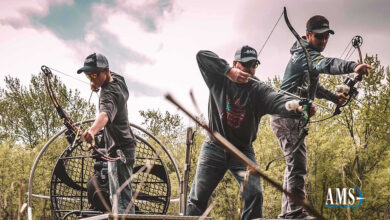Complete Guide to Early Spring Bass Fishing

As a passionate angler who lives for the thrill of the catch, I eagerly await early spring each year.
When those first warm breezes melt the ice and turn the world green, I know it’s almost time. Prespawn is here – one of the best windows all year to catch lunker largemouth bass.
In this complete guide to early spring bass fishing, I’ll share everything I’ve learned after years on the water about how to find and fool more bucketmouths during this special season.
From water temps to productive patterns, reaction baits to niche approaches, let’s pull back the curtain on my top springtime secrets.
How to Locate Bass in the Spring
If you are bass fishing in March, pinpointing the green fish can be tricky, but understanding their migration patterns makes it easier. As water temperatures creep from ice-cold into the 50s after winter, bass emerge from their deep hideouts and begin roaming shallow.
They’re seeking warmer water to increase their metabolisms and prime their reproductive instincts before the spawn. I’ve found the north-facing banks with the most direct sun exposure tend to heat up first. So that’s where I focus my initial efforts every spring.
Any locale where sunlight can warm shallow water often holds active prespawn fish this time of year – whether it’s the back of a winding creek, a sun-drenched mudflat, or even a ditch channel connecting to the main lake. Submerged vegetation, fallen trees, stumps, docks, rocks – all provide necessary cover that transitional bass relate and orient to.
As I poke around searching for active fish, I also make careful note of water clarity and conditions. Stained, muddy areas tend to warm more quickly thanks to increased solar absorption. So siltier stretches usually draw earlier migrations of fish in early spring.
While clear water with increased visibility can still kick out some slobs for anglers who pinpoint the warmest available pockets, more fertile fisheries offer better odds for finding fast action this time of year in my experience.
Understanding Bass Behavior
With the arrival of those first warm spring days, bass begin to shake off their winter dormancy. They’re following distinct patterns that you can learn to predict as they focus on feeding heavily to prepare for the upcoming spawn.
In early spring, you’ll find bass either extremely deep or surprisingly shallow. Water temperature drives almost everything bass do, and they’re searching for the sweet spot.
Smallmouth bass typically hold to their winter patterns longer, hugging deep rock piles and boulder fields. Largemouth start prowling earlier—especially around whatever weed remnants survived from fall.
The extreme shallows heat up fastest—especially rocky areas and spots with woody cover. These hard structures absorb the sun’s warmth and create hotspots that draw bass like magnets.
When water temps push past 40 degrees, both species move shallow and start actively hunting the flats. But the water’s still cold, and they won’t chase baits far.
By mid-April, we hit the magic time—water temps reach the 50s, and bass feed aggressively before spawning. If you’re dreaming of a new personal best, this window offers your best shot.
The spawn triggers at specific temperatures—around 55 degrees for smallmouth and low 60s for largemouth. Bass beds appear as lighter-colored patches where males have fanned out nests near structure or vegetation gaps.
Not all bass spawn simultaneously. You’ll find pre-spawn, spawning, and post-spawn fish in the same water body, requiring you to stay flexible with your approach.
4 Tips For Early Spring Bass Fishing
Now that we’ve covered how transitional bass behave each spring, as well as where to find them, let me share my 4 favorite techniques that continually produce results.
1. Monitor Water Temps
As spring’s arrival creeps closer, I closely track water temperatures and weather changes. While most anglers recognize 50 degrees as the benchmark for improved bass activity, even slightly warming water earlier on can make a huge difference.
On sunny days when air temps spike more than 10 degrees warmer, bass metabolism and feeding instincts kick into overdrive. These acute fluctuations act like feeding triggers that stimulate hungrier bites throughout the day.
So I don’t waste prime time on marginal days, but rather focus my efforts on optimal windows to capitalize on frenzied activity.
2. Use Reaction Baits
When targeting lethargic fish in cold water, presentation speed is critical. So reaction baits are absolute fish catchers because they trigger instinctive strikes on erratically moving targets. Once bass activity ticks up in warming water, reaction baits also provoke angry attacks.
My early spring arsenal always includes suspending jerkbaits, lipless crankbaits, paddle tail swimbaits, wiggle worm drop-shot rigs, tubes, skirted jigs, and compact profiled chatterbaits – all armed with lively trailers like curly tail grubs.
Here’s a list of my favorite early spring bass baits:

3. Learn Patterns
Unraveling seasonal migration routes for the specific fishery you’re targeting gives you a real leg up. After identifying where bass spent the winter months hunkered down (often out in the deepest, most stable depths they can find), I try to connect the dots to their most likely spawning and ambush areas.
For example, say the fish wintered piled up on a 35 foot river channel bend, but move uplake into 5 foot flats surrounded by wood cover come spring to spawn. As water temperatures creep up, it’s game on where those two areas intersect.
So I’ll target 12-20 feet just inside long feeder creek arms, channel swings, tapering points, and submerged creek channels – knowing they can roam and find my lures along the migration corridors. Analyzing bottom contours and cover availability in transition areas really helps guide my search.
4. Search Below the Surface
Finally, don’t just target surface activity, because early season bass largely suspend and feed well below the surface as they transition prespawn.
Instead, thoroughly dissect each piece of fishy looking cover. Peer below the surface with your electronics seeking irregular objects like brush piles, stumps, ridges, or ledges that provide ambush points en route. Then methodically pick these sweet spots apart with reaction baits.
Skirted jigs like the Booyah Bass Jig crawl provocatively along bottom and suspending jerkbaits painters above cover force neutral bass to strike. Pay close attention to your line and equipment so you can detect subtle bites. Setting the hook quickly when a bass inhales your offering makes all the difference in sticking stubborn fish this time of year.
Early Spring Bass Fishing Tips and Techniques
Now that we’ve covered seasonal patterns and productive lure categories for early spring, let’s dive deeper into specific techniques for tempting more bronze beasts. Here are some of my most effective tricks of the trade for triggering prespawn bites when nothing else seems to work.

Mastering Lipless Crankbaits
I’d be lost in early spring without lipless crankbaits like the Rat-L-Trap. They cover water quickly to help pattern transitional bass, achieve amazing casting distance, and their tight wiggle flash entices reaction attacks.
I vary my retrieves dramatically based on conditions. Over stained water or thick grass mats, I rip that sucker as fast as possible like it’s fleeing for its life. When seeking pressured fish around rock or wood, I’ll slow roll the bait with occasional twitch-and-flutter drops.
Regardless of technique, I always tie these early spring bass lures on with 12-15 lb fluorocarbon lines. Fluoro floats better than heavy braided lines which keeps lipless cranks riding higher in the water column.
Tempting Pressured Fish With Suspending Jerkbaits
In my experience, nothing matches suspended hard baits for tempting neutral bass in cold water scenarios. I have infinite confidence in jerkbaits like the Lucky Craft Staysee 90 or Rapala Ripstop when other presentations fail to deliver.
This bait category shines thanks to an erratic side-to-side action that looks vulnerable with the rod tip engineering their chaos. I use short 1-3 foot rips followed by a 3-5 second stationary pause. This offbeat retrieve looks like an injured baitfish begging to get eaten.
To cover expansive areas, I make long casts then work back on a semi-slack line so the wind and current impart additional movement. For skipping beneath boat docks or precision casting around cover, I rely entirely on cadenced jerks of my rod tip to dance these deadly baits.
Varying your retrieve speed triggers reaction strikes from otherwise uninterested fish, so don’t be afraid to experiment.
Follow the Birds
While chaotic winds often hamper angling efforts, early spring is one scenario where I welcome gusty conditions. When howling winds blow into shallow lake areas, it tends to stack up schools of baitfish tight to protected cover.
In turn, this bait buffet draws hungry packs of active bucketmouths prowling familiar staging areas with renewed intensity and focus thanks to the easy meals. Whenever I notice diving birds working in spring, I make a beeline to their area and start firing casts to pick off bellies stuffed bass gorging just below.
Pound Every Piece of Productive Water
Perhaps my favorite lesson I’ve learned about early season bassin over the years is that these fish school up by size extra tight before the spawn. So when you discover that magic lure profile, retrieve cadence, or precise target that draws strikes, pound that scenario absolutely relentlessly with repeated casts before advancing.
Pay Attention to Water Conditions
Water clarity can make or break your spring fishing success. Stained or muddy water warms faster than crystal clear lakes, often holding more active fish earlier in the season. After spring rains, focus on incoming creeks and runoff areas where bass gather to ambush disoriented baitfish.
Wind-blown banks create perfect feeding zones as waves stir up the bottom and push food toward waiting predators. On sunny days, those muddy areas absorb heat faster, creating thermal advantages that bass can’t resist.
Fish the Mudlines
In my springtime experience, mudlines offer some of the most predictable patterns year after year. As adjacent creek channels, shallow mud flats, and connecting ditches absorb more heat – they often warm significantly faster than main lake water.
This forms intense temperature differentials and thermal breaks along transitional zones. Cruising prespawners follow these distinct thermoclines like underwater highways during their migration cycles seeking the warmest available conditions.
Early Spring Bass Fishing: FAQs
What are the best air temperatures for bass fishing in early spring?
Focus efforts on days with highs ranging 60-75 degrees for most consistent success. Colder or hotter than that range generally reduces daylight activity windows. However, 40 degree nights followed by 60 plus degree rapid spikes often yield some ridiculous mid-day blitzes in my logbook.
When is the best time to fish for bass?
The most consistent big bite typically happens from late morning through afternoon when warming conditions are at their peak, but the low light periods around sunrise and sunset also remain prime times to intercept heavier fish transitioning shallower beneath the radar. In fact, the night bite lights up very early in spring and offers a great change of pace once located.
If water hits 50 degrees does that guarantee the spawn is imminent?
While many anglers recognize 50 degrees as the magic number when reproducing activity intensifies for most U.S. fisheries, exceptions exist.
Bass spawn when conditions allow, so temperatures triggering spawns down South may still find Northern strains weeks away from fanning beds. Focus more on fish behavior like staging, cover selection, and lure preference rather than just the number.
Final Thoughts
As the old saying goes – when spring arrives, it’s time to set the hook! Seize early spring bass fishing by keying in on warming trends, migration patterns, and cast diligently along transitional zones with reaction baits.
Miss a strike? Make another cast! Precision and persistence pays huge dividends. Use this complete bass guide to help craft your own spring tide adventures.
No other season offers heart pounding topwater bites and acrobatic bulldog battles from bass crushing lures in the shallows with such reckless abandon. Hope to see you out there!


